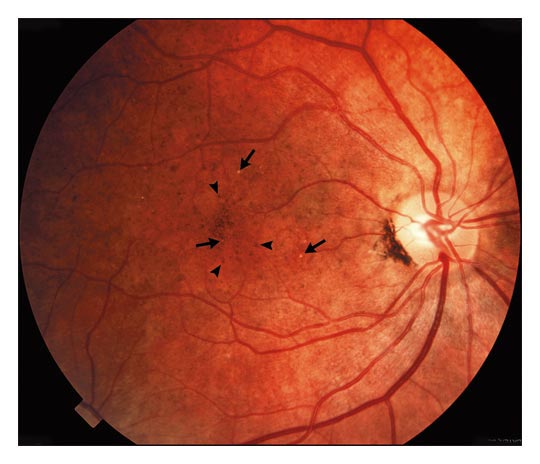Dx : congenital rubella syndrome
- classic triad of congenital rubella includes ocular abnormalities, heart disease, and deafness.
- Congenital rubella produces a classic salt-and-pepper pigmentation of the fundus.
- The nonprogressive retinopathy is generally benign and does not interfere with vision unless choroidal neovascularization develops in the macula
Management --> as above , if nonprogressive just F/U
Congenital rubella syndrome (CRS)
- occur in a developing fetus of a pregnant woman who has contracted rubella during her first trimester.
- If infection occurs 0-28 days before conception, there is a 43% chance the infant will be affected.
- If the infection occurs 0-12 weeks after conception, there is a 51% chance the infant will be affected.
- If the infection occurs 13-26 weeks after conception there is a 23% chance the infant will be affected.
- Infants are not generally affected if rubella is contracted during the third trimester, or 26-40 weeks after conception.
- Problems rarely occur when rubella is contracted by the mother after 20 weeks of gestation
The classic triad for congenital rubella syndrome is:
1 ) Sensorineural deafness - (58% of patients)
2 ) Eye abnormalities - especially cataract and microphthalmia (43% of patients)
3 ) Congenital heart disease - especially patent ductus arteriosus (50% of patients)
Other manifestations of CRS may include:
spleen, liver or bone marrow problems (some of which may disappear shortly after birth)
mental retardation
small head size (microcephaly)
eye defects
low birth weight
thrombocytopenic purpura (presents as a characteristic blueberry muffin rash)
hepatomegaly
micrognathia
Posted by : ผ่านมาแถวนี้พอดี , Date : 2009-09-24 , Time : 18:04:56 , From IP : ppp-58-8-189-40.revi
|
